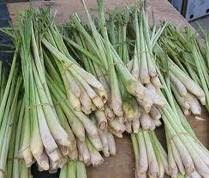LEMON VERBENA
This plant should not be confused with Lemon Balm or Lemon Grass. It has had a few changes of Latin names, but is now officially known as Aloysia triphylla. It has been called Lippia citriodora, Aloysia citriodora, and is commonly known by a variety of names, including, Lemon Beebrush, Cedron, Yerba Louisa and Lemon Louisa. It originated in South America and was brought to Europe by the Spaniards in the 18th century. It arrived in Britain in 1784, and is easily grown.
It can be used in teas, or tisanes, the leaves can be dried and used in pot pourri mixture, and it is good with fish, chicken, salad dressings vinegars and marinades.
 It was named after Maria Louisa, Princess of Parma in 1819, and in the Language of Flowers is a symbol of purification and love and enchantment. It was thought that it would attract a suitor in folk superstitions.
It was named after Maria Louisa, Princess of Parma in 1819, and in the Language of Flowers is a symbol of purification and love and enchantment. It was thought that it would attract a suitor in folk superstitions.
It is used in medicine to relieve stomach cramps and colon spasms, and it is believed that it will give you a mental boost and help if you feel depressed. A tisane made from the leaves can also help reduce fevers. If you infuse it in cider vinegar it makes a good tonic for the skin, as it softens and refreshes it. You can put the leaves in finger bowls too. The essential oil from the leaves is said to boost the liver’s functions and assist the respiratory and digestive system.
Below is a refreshing tisane for you to try.
Lemon Verbena, Hibiscus and Ginger Tisane
 Ingredients
Ingredients
1 handful lemon verbena leaves, torn roughly
1 handful dried hibiscus flowers
2 tsps finely chopped root ginger
7 cups water
sugar or honey to sweeten
Method
Put 7 cups of water in a pan and bring to the boil. Remove the pan from the heat and put in the ginger, dried hibiscus flowers and lemon verbena leaves. Leave to steep for 5 mins, then strain and serve.
Serve with honey or sugar if necessary.
This has Taste and is a Treat.
This plant should not be confused with Lemon Balm or Lemon Grass. It has had a few changes of Latin names, but is now officially known as Aloysia triphylla. It has been called Lippia citriodora, Aloysia citriodora, and is commonly known by a variety of names, including, Lemon Beebrush, Cedron, Yerba Louisa and Lemon Louisa. It originated in South America and was brought to Europe by the Spaniards in the 18th century. It arrived in Britain in 1784, and is easily grown.
It can be used in teas, or tisanes, the leaves can be dried and used in pot pourri mixture, and it is good with fish, chicken, salad dressings vinegars and marinades.
 It was named after Maria Louisa, Princess of Parma in 1819, and in the Language of Flowers is a symbol of purification and love and enchantment. It was thought that it would attract a suitor in folk superstitions.
It was named after Maria Louisa, Princess of Parma in 1819, and in the Language of Flowers is a symbol of purification and love and enchantment. It was thought that it would attract a suitor in folk superstitions.It is used in medicine to relieve stomach cramps and colon spasms, and it is believed that it will give you a mental boost and help if you feel depressed. A tisane made from the leaves can also help reduce fevers. If you infuse it in cider vinegar it makes a good tonic for the skin, as it softens and refreshes it. You can put the leaves in finger bowls too. The essential oil from the leaves is said to boost the liver’s functions and assist the respiratory and digestive system.
Below is a refreshing tisane for you to try.
Lemon Verbena, Hibiscus and Ginger Tisane
 Ingredients
Ingredients1 handful lemon verbena leaves, torn roughly
1 handful dried hibiscus flowers
2 tsps finely chopped root ginger
7 cups water
sugar or honey to sweeten
Method
Put 7 cups of water in a pan and bring to the boil. Remove the pan from the heat and put in the ginger, dried hibiscus flowers and lemon verbena leaves. Leave to steep for 5 mins, then strain and serve.
Serve with honey or sugar if necessary.
This has Taste and is a Treat.














































